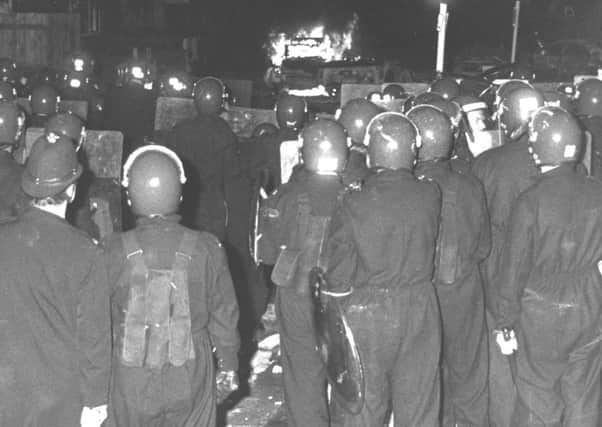Crackdown in era of unrest: The week that was. May 16 to 22, 1985.


He was raucously supported by Tory MPs in the Commons, as he hailed his long-awaited White Paper as a moderate set of safeguards against mob violence and mass disruption. But Shadow Home Secretary Gerald Kaufman said the proposals would turn the police into unwilling agents of government political and industrial policy.
Two Yorkshire pits were to close and four others would be involved in mergers with the loss of 3,000 jobs, said the National Coal Board. The news came as a shock to the 600 miners at Darfield Main Colliery, who were told their pit would close at the end of September.
Advertisement
Hide AdAdvertisement
Hide AdThe closure of the 220-man Emley Moor pit in December was less shocking, as its reserves were almost exhausted.
The NCB said remaining reserves at Darfield would be worked from Houghton Main colliery nearby. The merger plans involved Woolley Colliery and North Gawber colliery and Bulcliffe Wood and Calder drift colliery merging with Caphouse and Denby Grange collieries.
The NCB said that no compulsory redundancies would be necessary.
Meanwhile, the new Coalfield Communities Campaign was launched with the backing of 54 local authorities and senior figures from the Church, politics, industry, education and leading trade unions.
Advertisement
Hide AdAdvertisement
Hide AdIt was seeking meetings with the Government, National Coal Board and European Community in an attempt to find ways of preserving jobs and finding new ones.
In a paper commissioned by the campaign and written by Bradford University’s Professor Jonathon Winterton a gloomy forecast emerged of a minimum decline of 60,850 job losses from the closure of 80 pits to 108,350 losses if new technology was adopted on a large scale for the process of coal extraction.
A third suspected case of Legionnaires’ Disease was being treated at St Luke’s Hospital in Bradford. A hospital spokesman said the patient, a man in his 50s, was now making good progress, having been admitted some weeks previously with pneumonia-like symptoms.
The hospital said the cause of the illness had not been established, but it had not originated at St Luke’s, from where the most recent patient’s sister-in-law had been discharged after contracting the illness. The two cases were not connected to that of a 64-year-old man who had been admitted to St Luke’s following an earlier spell in Stafford General Hospital. Legionnaires’ Disease had killed 37 people across the country so far.
Advertisement
Hide AdAdvertisement
Hide AdIn foreign news, a United Nations relief worker from Dublin who had been kidnapped at gunpoint in Beirut, was freed unharmed after several days in captivity.
Aidan Walsh, a 48-year-old father of three, was reported to be fit and well, said the Irish Foreign Affairs department. News of his safe release was immediately relayed to his family.
Mr Walsh, deputy director of the UN Relief and Works Agency, was dragged from his car near the Beirut seafront. UN Secretary-General Perez de Cuellar immediately called for his release.
He was set free in a busy city street, and was believed to be travelling home to Cork by the weekend.
The identity of the gang which seized him was not yet known.